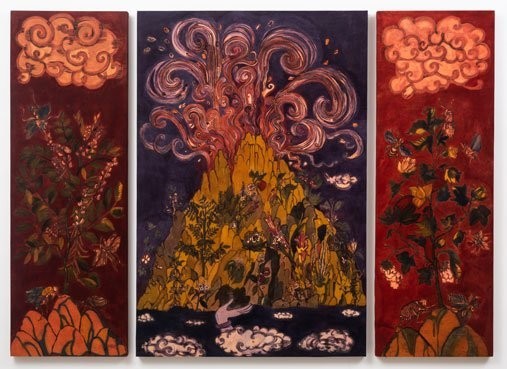Indian Floral : For centuries, plants and flowers have inspired Indian artists of different genres. The lotus flowers and floral meanders depicted in the Buddhist sites dating back to the 3rd century, the depiction of Hindu God Vishnu on a throne of a lotus flower, and the famous paintings of Ajanta and Ellora caves from the 5th century are the most excellent and oldest examples depicting florals in Indian Art. However, florals did not become the design language for Indian textiles for a long time, not until the beginning of the Sultanate Period in the twelfth century when Islamic culture started influencing Indian art & design.
Indian Art
The history of painting in India goes back 2000 years, something that many do not realize, starting with the beautiful murals of Ajanta, which are interesting too because they show people wearing craft still extant. The 11th century saw the illustrated Pala manuscripts, painted on palm leaves, and the earliest example of miniature painting in India. The next development was the Jain school of Gujarat, which eventually lead to the Rajput tradition of miniature art. As it grew and developed, the Rajput tradition divided into two distinct schools, Rajput and the Pahari school, based in Himachal Pradesh, the hilly state in the north-west of India.

The Story of Indian Kalamkari : Imagine a textile that is traditionally hand-painted with a bamboo pen, has a history which goes back 3000 years, and was partly instrumental in India losing her independence. That is Kalamkari, with its Persian root ‘Ghalam’ or pen, and ‘Kari’ or craftsmanship.
Kalamkari in its current form, where resist dyed fabrics are hand painted, is believed to have originated in the 8th century AD, though painted fabrics have been discovered in the Indus Valley Civilisation. This was a time when religious traditions and tales from Hindu mythology were handed down orally by itinerant minstrels, similar to traditions in Europe. Kalamkaris with depictions of tales from Hindu mythology, were a visual aid to these minstrels. In a sense, their purpose was similar to the stained glass of churches in Europe.


